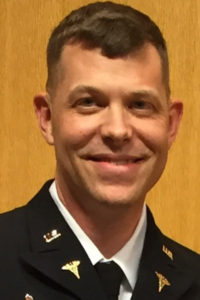
This year’s Awake Intubation With Bronchoscopic Guidance will feature high-fidelity simulation opportunities to help attendees get a feel of what it’s like to perform this useful airway management procedure in real-life scenarios of patients with difficult airways.
Obese patients and those with limited neck mobility or anatomic challenges are good candidates for awake intubation, and difficult airway algorithms recommend this approach when possible, noted Col. David G. Bell, MD, FCCP.
This year’s session includes experiences with interactive high-fidelity mannequins—which have the capability to breathe and to talk—to help train more as with a real patient and a real situation. The session starts at 8:45am on Wednesday in the Hemisphere Ballroom.
“We work to make the session as realistic as possible,” said Dr. Bell, associate dean of graduate medical education at San Antonio Uniformed Services Health Education Consortium. “Just like when things don’t always go as planned in real life, you need to have a backup plan, and you have to think about what other things to consider or change and why.”
The session will start with a short introduction and demonstration, and then go right into hands-on training. The course leaders will focus on technique first, and then dive into some interactive, high-fidelity cases of patients where an awake fiberoptic intubation should be considered.
“In those cases, if you can use the techniques we teach to provide some topical anesthetic to the patient to keep them breathing spontaneously, continue to provide them with noninvasive support for their breathing, and then go right into the airway with direct bronchoscopic guidance, and follow that with your endotracheal tube, you have a definitive airway without putting that patient at as much risk as an asleep intubation,” he said. “You also haven’t taken an emergency pathway away from your capabilities, whereas if you go straight to putting the patient asleep and paralyzing the patient, that’s your opportunity, and that’s it.”





